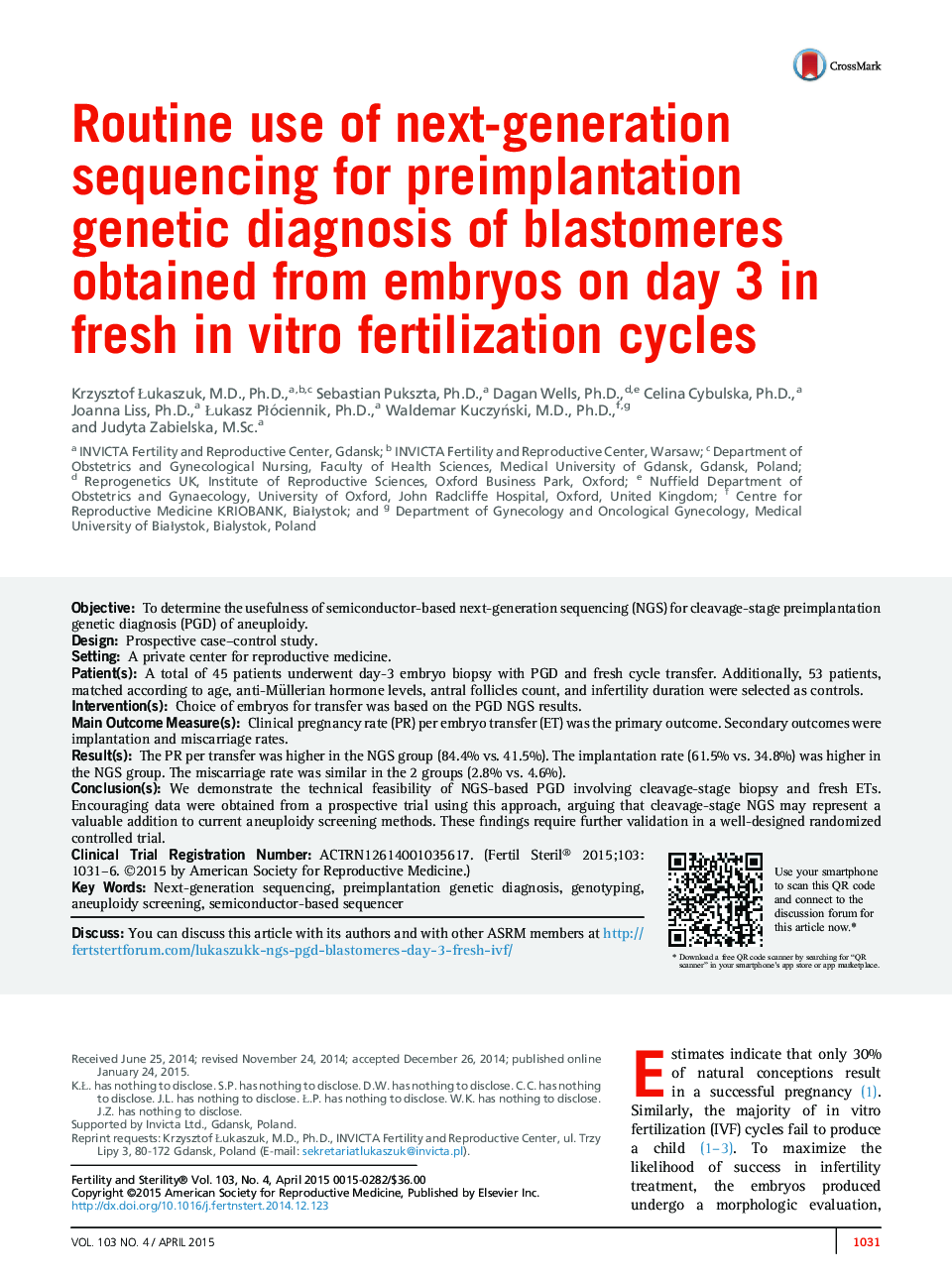| Article ID | Journal | Published Year | Pages | File Type |
|---|---|---|---|---|
| 6178685 | Fertility and Sterility | 2015 | 6 Pages |
ObjectiveTo determine the usefulness of semiconductor-based next-generation sequencing (NGS) for cleavage-stage preimplantation genetic diagnosis (PGD) of aneuploidy.DesignProspective case-control study.SettingA private center for reproductive medicine.Patient(s)A total of 45 patients underwent day-3 embryo biopsy with PGD and fresh cycle transfer. Additionally, 53 patients, matched according to age, anti-Müllerian hormone levels, antral follicles count, and infertility duration were selected as controls.Intervention(s)Choice of embryos for transfer was based on the PGD NGS results.Main Outcome Measure(s)Clinical pregnancy rate (PR) per embryo transfer (ET) was the primary outcome. Secondary outcomes were implantation and miscarriage rates.Result(s)The PR per transfer was higher in the NGS group (84.4% vs. 41.5%). The implantation rate (61.5% vs. 34.8%) was higher in the NGS group. The miscarriage rate was similar in the 2 groups (2.8% vs. 4.6%).Conclusion(s)We demonstrate the technical feasibility of NGS-based PGD involving cleavage-stage biopsy and fresh ETs. Encouraging data were obtained from a prospective trial using this approach, arguing that cleavage-stage NGS may represent a valuable addition to current aneuploidy screening methods. These findings require further validation in a well-designed randomized controlled trial.Clinical Trial Registration NumberACTRN12614001035617.
